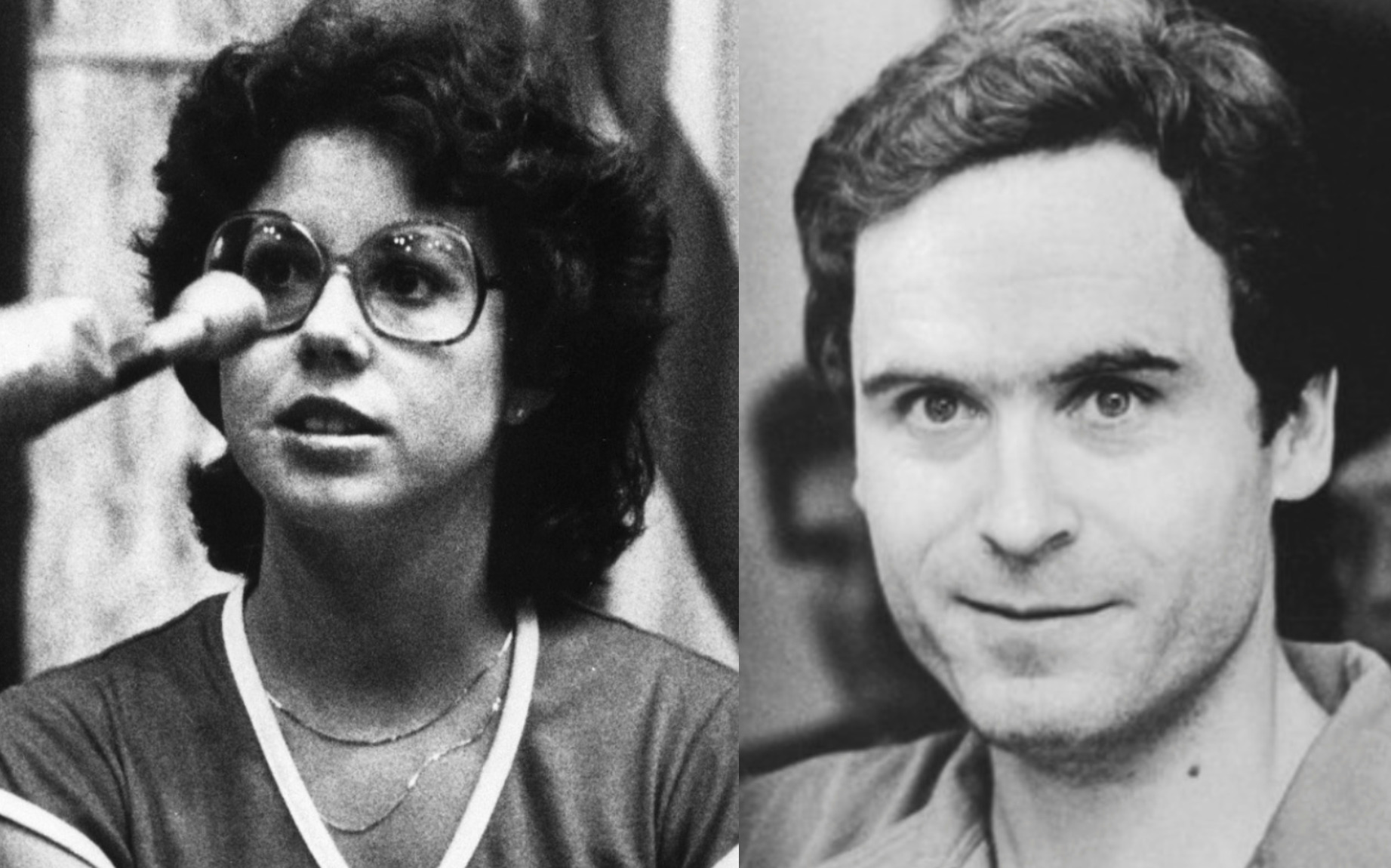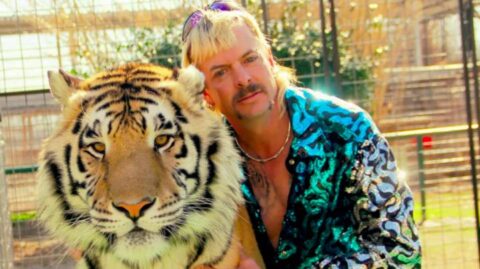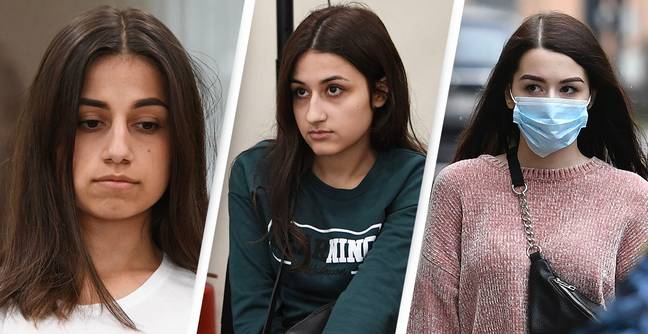Ted Bundy Survivor Tells Her Story
Kathy Kleiner Rubin likes to go to the bookstore with her husband, Scott, and head straight for the true crime section. She looks through the shelves until she finds what she’s looking for: a book on the serial killer Ted Bundy. The Stranger Beside Me, or maybe The Only Living Witness. Whatever it is, she’s probably already read it, but she still grabs it off the shelf and flips through it until she finds her name. Then she’ll look at her husband, smile, and say “now you find a book with your name in it.”
She might be joking around, but Kleiner is holding a book about the man who almost killed her. She was 20 years old when Ted Bundy snuck into her bedroom at Florida State University. As the years went on, Kleiner could have tried to forget him, but instead, she decided to try to figure him out — which is why she’s so comfortable in the true crime section of any bookstore.
There are so many books about Ted Bundy that Kleiner has been able to dedicate an entire section of her library to them. But Bundy books are not the only thing in abundance. There are movies, documentaries, Oxygen Channel specials, T-shirts, greeting cards, Tumblr fan accounts, rap lyrics, bumper stickers, coffee mugs, socks, you name it. The year he was arrested, the New York Times called him “Kennedy-esque”; forty-one years later, Zac Efron is playing him at a prestigious film festival. In 2018, Kleiner signed up for Twitter, and a Ted Bundy fan account responded to her first tweet: “Oh, there you are, Kathy.”
But all this fascination with the evil man that tried to kill her doesn’t bother Kathy. She is actually glad that people are still talking about the man who tried to kill her. “He was, and he lived, and he breathed, and he did what he did. And at some point he was — ” she laughs, “possibly a real person. I think it’s good for people to read books about Bundy. I really do. They need to know that there’s evil out there, but they can control it.”
Kathy Kleiner learned to fight for her life long before her encounter with Bundy. She was born in 1957 to Cuban-American parents. Her biological father died when she was five, and her mother Rosemary married Harry Kleiner, a tall, kind German from Pennsylvania. As a sixth grader in Fort Lauderdale, Kleiner was diagnosed with lupus, hospitalized for months, and eventually put on an experimental dose of chemotherapy that made her so hungry she’d eat mixing bowls full of Frosted Flakes and raw steaks warmed up in the oven. Post-chemo, her immune system was so weakened that she had to be homeschooled for seventh grade.
After lupus, Rosemary was convinced that her sweet daughter was breakable. She’d set up rules, handed down from the doctors: no physical education, no sunlight, and when she grew up, certainly no having babies. Instead of high school gym, Kleiner took theater. After a junior high spent in hospital beds and chemo chairs, goofing off in front of an audience felt incredible. She was a tiny kid, just under five feet, and during one Christmas performance, she played the star at the top of the tree.
In the fall of 1976, Kleiner enrolled at FSU in Tallahassee. She pledged Chi Omega after being recommended for admission by her high school friend Suzy White. As a freshman, Kleiner lived in an all-girls’ dormitory, but her parents convinced her to move into the sorority house for her sophomore year. It had a housemother and combination locks on the doors. She’d be safer there, they thought. That December, Kleiner and her mom spent hours shopping for new bedding, and decorated her room in shades of white and green.
Kleiner’s roommate, a junior named Karen Chandler, took equal care with her side of the room, and the girls were proud of the result. They kept a little trunk between their beds, which held books, a lamp, and Kleiner’s glasses. Chandler hung plants in macramé holders from the curtain rod, so the girls never closed their curtains. Their window faced the back of the sorority, and since they were on the second floor, they felt safe leaving the windows uncovered. Kleiner liked letting the sunlight in.
On Saturday, January 14th, 1978, Kleiner dressed up to attend a wedding at a nearby Wesley Chapel. She’d been attending the little church since her freshman year. She was even dating a boy, David DeShields, from the congregation. The bride was a nursing student and a good friend of Kleiner’s. After the reception, Kleiner went back to Chi Omega, changed into her pajamas, and studied in bed. Chandler read quietly on the other side of the room. Around 10:30 p.m., the roommates turned off their light and went to sleep.
Around 3 a.m., their bedroom door creaked open, and a dark figure crept in and tripped over the little trunk between their beds. Kleiner woke up.
When Ted Bundy arrived in Tallahassee, he was running from the law and looking for his next kill. He had killed dozens of young women in Washington, Utah and Colorado, and he’d already been arrested on suspicion of kidnapping and one count of murder. He insisted that he was innocent, but escaped jail twice, once by jumping out of a courthouse window in Aspen, another time by sneaking out of an overhead crawlspace in Glenwood Springs, Colorado, after which he ran all the way to Florida, where he rented a room near Chi Omega.
Around 2:45 a.m. on January 15th, Bundy made his way toward the sorority. There, he found two important things: a pile of firewood outside the back door, and a broken combination lock. After picking up a log, he crept inside and moved up the beautiful wooden staircase that led to the second-floor hallway. He made his way into the first room, where Margaret Bowman was sleeping alone. He bludgeoned her with the log, then strangled her with a pair of pantyhose. He crossed the hallway to Lisa Levy’s room, where he beat, raped, and strangled her. He also sexually assaulted Lisa with a hairspray bottle and bit her numerous times. These bite marks would be the first piece of physical evidence to link Bundy to the crimes.
He then crossed the hall again, pushed open the door to Kleiner and Chandler’s room, and tripped over the trunk that sat between their beds.
“I remember the noise of the trip and something falling off the trunk, and that woke me up,” says Kleiner. “The room was dark, and I didn’t have my glasses on, but I remember seeing a black mass. I couldn’t even see that it was a person. I saw the club, saw him lift it over his head, and slam it on me.
“The first time, it didn’t hurt. It was pressure, like someone pressing on your arm. And then he hit me again. And I think that’s where he hit me in the face and broke my jaw in three places and I passed out. But that’s what I remember the most: him lifting the club and bringing it down on me.”
The room was so small that Bundy was basically able to hit Kleiner with one side of the club, turn around, and hit Chandler with the other side. But before he could bring down a death-blow on either girl, their bedroom flooded with light.
Outside the back door, a sorority sister named Nita Neary was getting out of her boyfriend’s car after a late date. Because Kleiner and Chandler never closed their curtains, the car’s headlights were shining straight into their room.
“I saw the light, it was like God’s light,” says Kleiner. “I remember thinking, ‘Oh my God, something cleared the room.’”
Bundy raced downstairs. “I guess he thought he was seen,” said Kleiner. In fact, he was seen: Neary spotted his distinctive profile — thin lips, sharp nose — and would later provide the only eyewitness testimony at his trial. Minutes later, as Nita was telling another sister what she saw, the girls saw Chandler stumble out of her room, covered in blood. When they moved to help her, they saw Kleiner sitting up in bed, rocking and moaning.
Before long, paramedics were bending over Kleiner, telling her that she’d been shot in the face. She tried to scream, but with a shattered jaw, a torn right cheek, and a tongue almost bitten in half, she couldn’t make a sound. The paramedics lifted her onto a gurney and took her down the wooden stairs, and she saw the faces of her sorority sisters crowding above her. Outside, the air was full of flashing police lights. To Kleiner, freezing and confused, the scene looked like some sort of carnival.
In the emergency room of Tallahassee Memorial Regional Medical Center, doctors cut off her yellow Christmas nightgown and stared down at her underwear, confused. She heard them wonder aloud if they should give her a rape kit examination, a thought that filled her with terror. But then she noticed a familiar face in the crowd of doctors: it was the bride from that morning, working a training shift at the ER on her wedding night. Kleiner heard her say, “With such a brutal attack, what are the chances that he would put her underwear back on?” The friend stroked her hair, and for the first time that night, Kleiner felt her fear drain away.
After a week in the hospital with her jaw wired shut and a guard at the door, police led Kleiner back to Chi Omega so she could tell them if her attacker had taken anything from her room. At her door, they lifted the yellow crime scene tape so that she could duck under it. Kleiner gasped.
“There was blood splattered all over the wall. All over,” she says. “And my green and white bedspread was covered. My beautiful bedspread I had just gotten a few weeks earlier, that my mom and I had spent so much time picking out. The blood was everywhere. Everywhere. On the walls, and everything. That really stays in my mind. I can see it right now.”
Kleiner spent the next few months healing at her parents’ home in South Miami, as undercover cops kept watch across the street. She met with an oral surgeon, who had to re-break her jaw, realign it, and wire it shut again. (Bundy was caught on February 15th. His name meant nothing to her, as she hadn’t been following the murders out West, and neither did his face, since she hadn’t technically seen it when he loomed above her.) For the next nine weeks, she ate only what she could slurp through her teeth; her sister Marilynn tried to make mashed potatoes liquid enough to fit through a straw, and once spiked a batch of Cream of Wheat with garlic. At night, Kleiner dreamed of eating hot dogs and popcorn.
Though she was surrounded by family, she was desperate to hear from her Chi Omega sisters, but no one was returning her calls. This was the first taste of the peculiar loneliness Kleiner would feel as a Bundy victim in a world of Bundy news; she had just survived a brush with one of the most dangerous men in the country, and yet in some ways, she was on her own. The TV cameras swarmed around Bundy, and the rest of the world was moving on. “I hadn’t been around any of [my sorority sisters] since the attack, and they’re all moving forward, and here I am stuck in a bubble,” she says. “Me and Bundy, in a bubble.” In the meantime, Bundy groupies were showing up at his courtroom appearances, swooning every time the killer grinned at them.
Kleiner may have been small, but she was fierce. Newspapers would later call her a “belligerent survivor.” Three months after the attack, she took a job as a cashier at a lumberyard to overcome her fear of strange men. She was also planning a wedding — reluctantly. DeShields had proposed right after the attack, and their families loved the idea, as marriage seemed like the perfect way to keep Kleiner safe. She was married in June in a long-sleeved, high-necked dress that her parents picked out for her. Right after the wedding, she took a job as a bank teller, where she was promptly robbed at gunpoint by an attractive male stranger. Kleiner took the afternoon off and returned the next day.
In the spring of 1979, the Chi Omega murder trial was moved to Miami, since no impartial jury could be found in Tallahassee. When the day came for Kleiner to testify, she walked up to the witness stand and saw Bundy staring at her from the defense table, holding his chin in the deliberately casual gesture that would become his courtroom trademark. The look on his face wasn’t intimidating, or furious, or pleading. It was emotionless.
“He was just staring me down,” she says. “I wasn’t scared, I wasn’t angry, so much as a…throwing-up feeling. It was so bad. It was disgust.” She answered every single question looking straight at him. After the prosecutor finished, the defense had only one question for her: Did you see this man in your room? Kleiner was forced to reply that she’d seen only a shadow.
It was a frustrating moment for Kleiner, but the tactic didn’t save Bundy. On July 24th, he was found guilty, and a week later, sentenced to death by electric chair.
Bundy would live for almost another decade, as his appeals moved through Florida’s legal system. In the meantime, the media walked on eggshells around Kleiner, not wanting to re-traumatize her. The intention was kind, and some of the victims’ families seemed to crave silence. (In 1989, the father of Karen Chandler, Bundy’s other sorority survivor, told the press that their family “does not discuss Bundy.”) But the reality, for Kleiner, was rather isolating. Even Ann Rule, who wrote the definitive book on Bundy, reached out to Kleiner and mailed her an autographed mousepad, but didn’t interview her for The Stranger Beside Me.
So Kleiner moved forward alone. In 1980, she returned to the Chi Omega house and walked up that curving wooden staircase, full of dread. As she climbed, she could almost see herself coming down the stairs on the gurney. She passed Margaret’s room, then Lisa’s room, and then turned into the room that used to be hers. “I expected to see the blood on the wall, and my dirty linens, bloody and crimson,” she says. “Nothing was the same. I took a deep breath, I turned around, and I was so glad I did it.”
Her marriage to DeShields was breaking down by this point, but at the end of 1980, they got miraculous news: Kleiner was pregnant. She told her parents with a cake that said Congratulations, you’re going to be grandparents, and her mother screamed, “You’re going to kill yourself!”
When her son Michael was two years old, Kleiner and DeShields filed for divorce. Four years later, she began dating Scott Rubin, one of her theater friends from high school. He was the only person with Kleiner on the night of January 23rd, 1989: Ted Bundy’s last night on earth. It was the Floridian event of the decade, drawing more TV cameras than the Pope’s visit two years earlier, but Kleiner and Rubin sat through it alone.
When the district attorney called Kleiner to tell her that Bundy was dead, she began wailing and rocking back and forth, as Rubin tried to hold her. Margaret and Lisa were flashing through her mind. As she wept, she felt something change. “All the angst…I felt it lifting,” she says. “I felt so clean.” After that, she got dressed and went to breakfast with Rubin. Then they went shopping for a new car, and stopped for lunch.
“We just spent a normal day together,” she says. “I didn’t want him to have any more influence on me.”
Today, Kleiner and Rubin live in New Orleans. They are grandparents, dog-owners, and extraordinarily happy people. Due to the injuries she sustained in 1978, Kleiner has had numerous surgeries for TMJ. She’s also survived stage two-breast cancer. “I’ve prayed to God: You know, it’s someone else’s turn,” she laughs. She plans to see the Zac Efron movie when it comes out. “Hopefully they’ll have one of the Kardashians play me,” she chuckles. She recently purchased a book about the personalities of serial killers, where she devoured information about other famous criminals like Jeffrey Dahmer. “That was interesting!” she said.
In many ways, Kleiner has moved on from Bundy. She was a bigger part of his life than he was of hers. Bundy’s story is, at its core, the story of Kathy, Karen, Lisa and Margaret, and all the other young women he attacked and killed. And the seeds of his downfall were planted that night at the sorority house: the bite mark. The eyewitness. The fact that Kleiner and Chandler never once closed those curtains.
But Kleiner’s life is so much more than the tale of a girl who survived a serial killer, no matter how many times her name appears next to Bundy’s in books. “She’s still very, very much the same person she was in high school,” says her high school friend Nora Bergman. “So much of Kathy has not changed as a result of her attack, which is what I find to be really amazing.” Her roles are many: mother, actress, lumberyard cashier, bank teller, wife, star on top of the Christmas tree. “It made me stronger, and it gave me more to live for, and it taught me nobody’s going to put me down,” Kleiner says. That night happened, yes. But though the rest of the world might read about it obsessively, she reads it as just one night of her life — a dark night, but also the night where light poured in through the window and drove the darkness away.









Evil does exist. This is why capital punishment should be enforced
I agree with Janet Colbert. So many bad people get a reprieve for decades and the families have to continue living the horror due to loss and memories. Who stands up for those whom we have lost? And these bad people get out and continue what they’ve always done…bad things!